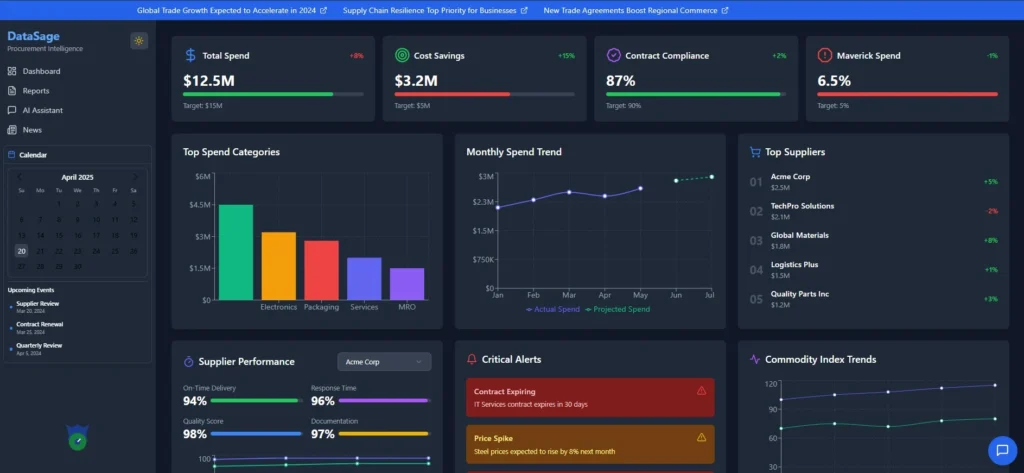
A mid-sized industrial manufacturing company with operations spanning multiple regions, primarily producing mechanical and electronic components for automotive and consumer appliance sectors. Although historically profitable, increasing competition, rising raw material costs, and decentralized purchasing processes were steadily eroding margins and profitability.
The company faced escalating procurement costs due to fragmented sourcing activities spread across various departments and locations. Supplier selection and contract negotiations were inconsistent, leading to inefficiencies and inflated prices. Limited visibility into spend patterns and supplier performance created frequent bottlenecks, resulting in delayed production schedules and declining customer satisfaction.
The company faced escalating procurement costs due to fragmented sourcing activities spread across various departments and locations. Supplier selection and contract negotiations were inconsistent, leading to inefficiencies and inflated prices. Limited visibility into spend patterns and supplier performance created frequent bottlenecks, resulting in delayed production schedules and declining customer satisfaction.

A rapidly growing regional grocery retail chain operating multiple stores across urban and suburban locations. The retailer’s competitive differentiation depended heavily on offering fresh produce and timely product availability. However, the business grappled with inventory management challenges, including excess inventory, frequent stockouts, and high spoilage rates of perishable goods, significantly affecting profitability.
The retailer’s manual inventory forecasting methods were simplistic, relying on historical averages that did not accurately account for seasonal variability, promotions, weather, or consumer trends. This approach frequently led to excessive inventory, product wastage, lost sales, and strained supplier relationships. The lack of precise forecasting undermined profitability and negatively impacted customer satisfaction.
performance created frequent bottlenecks, resulting in delayed production schedules and declining customer satisfaction.
Sagelens introduced an AI-powered demand forecasting solution tailored specifically for grocery retail. This solution integrated historical sales data, seasonal demand trends, store-specific buying patterns, promotions data, and external economic indicators (weather patterns, local events, competitor activity). Advanced machine learning algorithms—including LSTM neural networks—produced accurate short-term and long-term demand predictions, enabling precise ordering, reducing waste, and significantly lowering carrying costs.

A medium-sized electronic components distribution and supply company, providing critical electronic parts to a diverse customer base within technology, healthcare, and automotive industries. Despite having steady business growth, the organization lacked robust in-house technical and data expertise. It relied heavily on manual processes, spreadsheets, and outdated software, creating substantial operational inefficiencies and exposing the business to compliance and operational risks.
The absence of an integrated data infrastructure or ERP system meant procurement and inventory data were stored in disconnected spreadsheets, emails, and physical files. As a result, it was difficult for procurement teams to maintain compliance with evolving government regulations and industry standards. They also lacked real-time insights needed for negotiating favorable supplier contracts. Without technical expertise to manage data-driven decision making internally, the organization faced costly inefficiencies, operational risk, and limited growth potential.
Sagelens implemented a fully integrated ERP and procurement management platform—DataSage—combining robust ERP functionality, data warehousing capabilities, and AI-driven analytics tools in one seamless solution. With no need for internal technical resources, Sagelens consultants handled every step of the implementation, from data migration to staff training.
The DataSage ERP provided a single, cloud-based data repository accessible to procurement staff in real-time, while integrated AI models continuously analyzed procurement data to predict demand, forecast optimal procurement timing, and highlight compliance risks. An embedded AI-based procurement assistant further supported staff in day-to-day operations, recommending optimal suppliers, providing negotiation benchmarks, and proactively monitoring compliance regulations.
Chosen by Industry Leaders for Seamless Procurement





